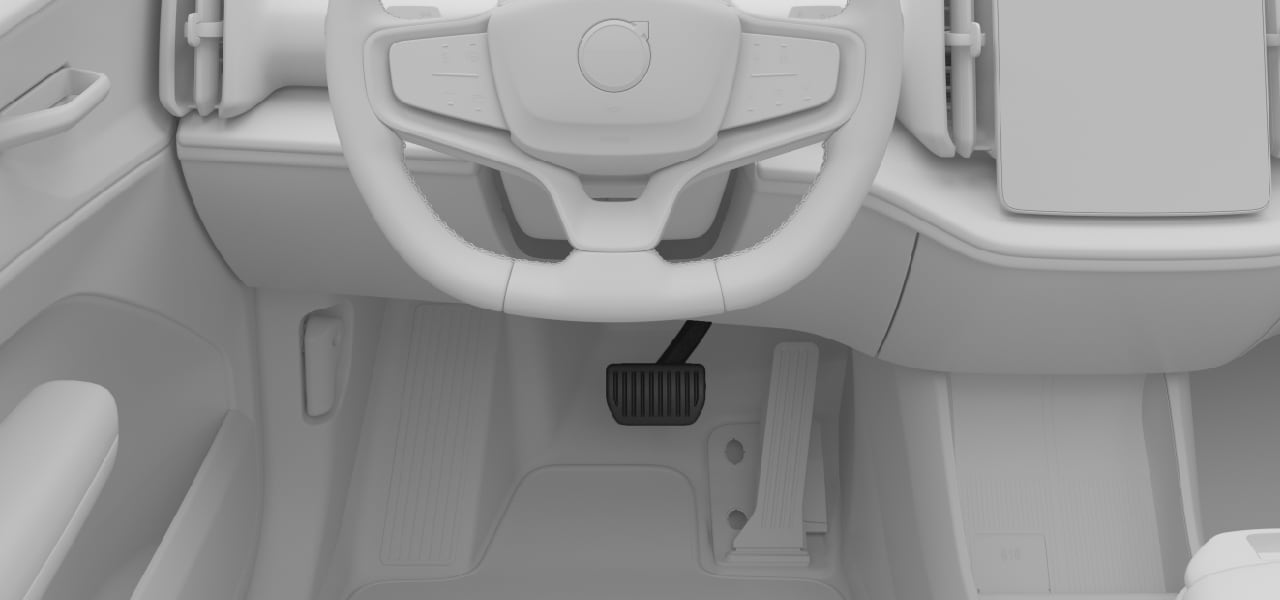
The foot brake engages either regenerative braking or the friction brakes, depending on how hard you press the pedal. Light braking activates regenerative braking, whereas harder braking engages the friction brakes.
Note
Automatic disc brake engagement
Regenerative braking often covers the majority of your braking needs. Therefore, it’s possible that the disc brakes won’t be engaged for long periods of time. To keep them clean, dry and ready for use, the car will regularly engage the disc brakes along with regenerative braking in light braking manoeuvres.
Electronically controlled braking1
The foot brake is electronically controlled. As the braking force is transmitted electronically rather than physically, there are no natural reaction forces travelling from the brakes to the pedal.
Anti-lock braking system2
The car's anti-lock braking system prevents the brakes from locking up during hard braking. This improves manoeuvrability.
Note
P button
At high speeds, pressing and holding the P button slows the car down at a steady rate. This provides a backup alternative to braking normally. Only use the P button in this way if you are unable to brake using the brake pedal.
Start-up checks
Several brake systems are part of the car's start-up check. Make sure to resolve any indicated brake faults before driving.
Warning
Wet brakes
The car's stopping distance is longer if the brake discs are wet. If they have been exposed to water, safely perform a braking manoeuvre to remove water from the brakes. By engaging the disc brakes while driving, they heat up and dry.